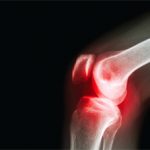(Reuters Health)—Total knee replacement surgery can be a cost-effective procedure for patients with severe obesity and osteoarthritis (OA), even when they also have comorbidities such as cardiovascular disease or type 2 diabetes, a new study suggests.
Researchers did a cost-benefit analysis for two patient populations (over 65 years, and age 50 to 65) who had a body mass index (BMI) of at least 40 and symptomatic end-stage OA. They used the Osteoporosis Policy Model to determine long-term clinical benefits of surgery and examined data on costs from the Healthcare Cost and Utilization Project and the Medicare.
The outcome measures were cost, quality-adjusted life-years (QALYs) and incremental cost-effectiveness ratios (ICERs) discounted at 3% annually.
Among patients 50 to 65 years old, total knee replacement was tied to a 0.71-year increase in QALYs and increased medical costs over a lifetime of $25,000, for an ICER of $35,200, researchers calculated.
Among patients over 65, total knee replacement was tied to a 0.39-year increase in QALYs and increased medical costs over a lifetime of $21,000, for an ICER of $54,100, they found.
“We took into consideration both the benefits of total knee replacement—reduction in pain, improvement in functional status and mobility and resulting improvements in health-related quality of life, reduction in need for analgesics, such as NSAIDs and even opioids, as well as potential detriments—risk of adverse events post-total knee replacement, which are generally very low, but higher in patients with extreme obesity and comorbidities—and costs associated with surgery, management of complications and pain management,” senior study author Elena Losina, PhD, says by email.
“Results of our formal comprehensive cost-effectiveness analysis showed that total knee replacement offers great value in persons with extreme obesity,” says Dr. Losina, director of the Policy and Innovation eValuations in Orthopedic Treatments (PIVOT) Center and co-director of the Orthopedic and Arthritis Center for Outcomes Research at Brigham and Women’s Hospital, Boston.
The ICER per QALY was $34,500 among people aged 50 to 65 without any comorbidities in addition to extreme obesity and end-stage knee osteoarthritis, and $46,900 in people over 65, the researchers report in Annals of Internal Medicine.1
For people who also had type 2 diabetes, the ICER per QALY was $39,000 for individuals 50 to 65 and $63,000 for those over 65.
And for patients with cardiovascular disease in addition to extreme obesity and end-stage knee osteoarthritis, the ICER per QALY was $39,000 for those 50 to 65 years and $64,400 for those over 65.
One limitation of the analysis is that data came from multiple sources, with the potential for selection bias on clinical outcomes and wide variation in methods for assessing effectiveness, the study team notes.
“The authors of this study did review the evidence on the benefits of total knee replacement and how failure rates vary with BMI, so assumptions were based on prior studies,” says David Howard, PhD, a professor and health economist at Emory University, Atlanta, who wasn’t involved in the study.
Because most insurance plans already cover this procedure, it’s also not likely that the study results would have an impact on which patients might be eligible for surgery, Dr. Howard says by email.
“Clinicians generally don’t consider cost when deciding which treatment to recommend,” Dr. Howard says. “However, the results of this study could make them feel more comfortable recommending total knee replacement to obese patients.”
Reference
- Chen AT, Bronsther CI, Stanley EE, et al. The value of total knee replacement in patients with knee osteoarthritis and a body mass index of 40 kg/m2 or greater: A cost-effectiveness analysis. Ann Intern Med. 2021 Mar 23.

